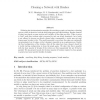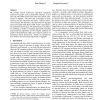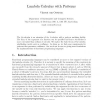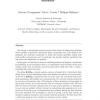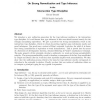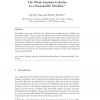46
Voted
TCS
2008
15 years 22 days ago
2008
110
Voted
TCS
2008
15 years 22 days ago
2008
Following the decontamination metaphor for searching a graph, we introduce a cleaning process, which is related to both the chip-firing game and edge searching. Brushes (instead o...
107
Voted
TCS
2008
15 years 22 days ago
2008
Graph searching encompasses a wide variety of combinatorial problems related to the problem of capturing a fugitive residing in a graph using the minimum number of searchers. In t...
106
Voted
TCS
2008
15 years 22 days ago
2008
We consider various well-known, equivalent complexity measures for graphs such as elimination orderings, k-trees and cops and robber games and study their natural translations to ...
97
Voted
TCS
2008
15 years 22 days ago
2008
Abstract. Many graph problems seem to require knowledge that extends beyond the immediate neighbors of a node. The usual self-stabilizing model only allows for nodes to make decisi...
102
Voted
TCS
2008
15 years 22 days ago
2008
The -calculus is an extension of the -calculus with a pattern matching facility. The form of the argument of a function can be speci ed and hence -calculus is more convenient than...
120
Voted
TCS
2008
15 years 22 days ago
2008
Our society is increasingly moving towards richer forms of information exchange where mobility of processes and devices plays a prominent role. This tendency has prompted the acad...
100
click to vote
TCS
2008
15 years 22 days ago
2008
We introduce a new unification procedure for the type inference problem in the intersection type discipline. It is well known that type inference in this case should succeed exact...
TCS
2008
15 years 22 days ago
2008
We define a new cost model for the call-by-value lambda-calculus satisfying the invariance thesis. That is, under the proposed cost model, Turing machines and the call-by-value la...
106
click to vote
TCS
2008
15 years 22 days ago
2008
Intersection types are well-known to type theorists mainly for two reasons. Firstly, they type all and only the strongly normalizable lambda terms. Secondly, the intersection type...

